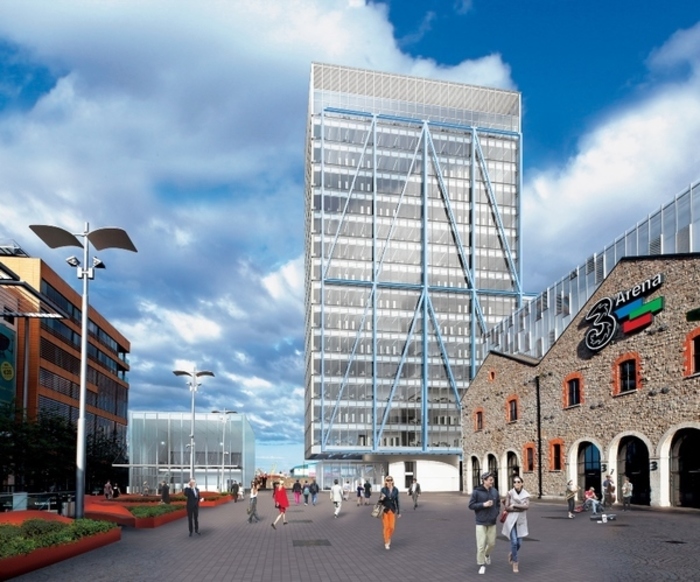Dublin is in a 'global race for investment' and taller buildings could be the answer
Ireland’s largest business group has suggested the Irish capital needs to embrace more high-rise developments.
IF DUBLIN WANTS to even consider featuring in the “global race for investment”, the blanket height restriction placed on inner-city and suburban residential lots needs to be scrapped.
That’s according to Ibec, the country’s biggest business group, which has published its submission to the Draft Dublin City Development Plan (2016-2022) and stated Dublin City planners need to be more flexible when considering tall residential building developments.
New proposals under Dublin City Council’s draft development plan could see the maximum height of inner city ‘low-rise’ residential developments reduced from 28m to 24m, with the maximum height of ‘low-rise’ residential lots in the suburbs also possibly dropping from 16m to 13m.
Ibec senior executive Aidan Sweeney said these new height restrictions will weaken the city’s ability to address the housing crisis and contradict international standards whereby a development is assessed on suitability and context, not blanket height restrictions.
He added that the area covered by Dublin City Council accounts for over one tenth of Ireland’s population and a restriction on building height will put “severe strain on the city’s resources” when housing and commercial space is already in short supply.
“The simple fact is that many existing ‘low-rise’ buildings in the suburbs couldn’t be built today. It demonstrates an unwillingness to deal with density issues facing the city,” he said.
The proposals in the draft development plan on building height will only impact on the development of ‘low-rise’ buildings and not new office blocks, such as The EXO building planned for Dublin’s Docklands, which will be city’s tallest office building when completed.
 The planned EXO office block
The planned EXO office block
Ibec’s submission also suggested creating a ‘tall buildings strategy’ that would earmark locations in the city where tall buildings would help address issues such as population density while not visually impacting the city or affecting heritage sites.
Earlier this year, in advance of the draft development plan being published, a number of Dublin City councillors said developing taller buildings was not the best way forward for Dublin. Green Party councillor Ciarán Cuffe said tall buildings could “overshadow” parts of the city.
Lagging behind
Sweeney said taller residential buildings closer to the heart of the city will also help make Dublin a more attractive location for talent and allow the city to compete with more liveable cities globally.
In recent years, Dublin has slipped down the most liveable city world rankings from 26th in 2010 to its current position of 33rd.
“The city is in a global race for investment, capital and talent which is intensifying all the time,” said Sweeney.
“Dublin needs to be firmly positioned amongst the world’s most liveable cities such as Copenhagen, Amsterdam, Vienna, Sydney and Vancouver in order to attract new business and jobs.
“Yet, the city is lagging behind when it comes to infrastructure, cost of doing business and our global quality of life ranking.”
Ibec’s call for a greater focus on making Dublin a more liveable city has come on the same day that Daft.ie released its latest quarterly analysis of the rental market, which showed that rents have risen above the peak prices seen during the Celtic Tiger.
Rental prices went up by 3.9% during the second quarter of 2016, which means the average rent in the second quarter stood at €1,037 – the highest level on record.
Note: Journal Media Ltd has shareholders in common with Daft.ie publisher Distilled Media Group.





